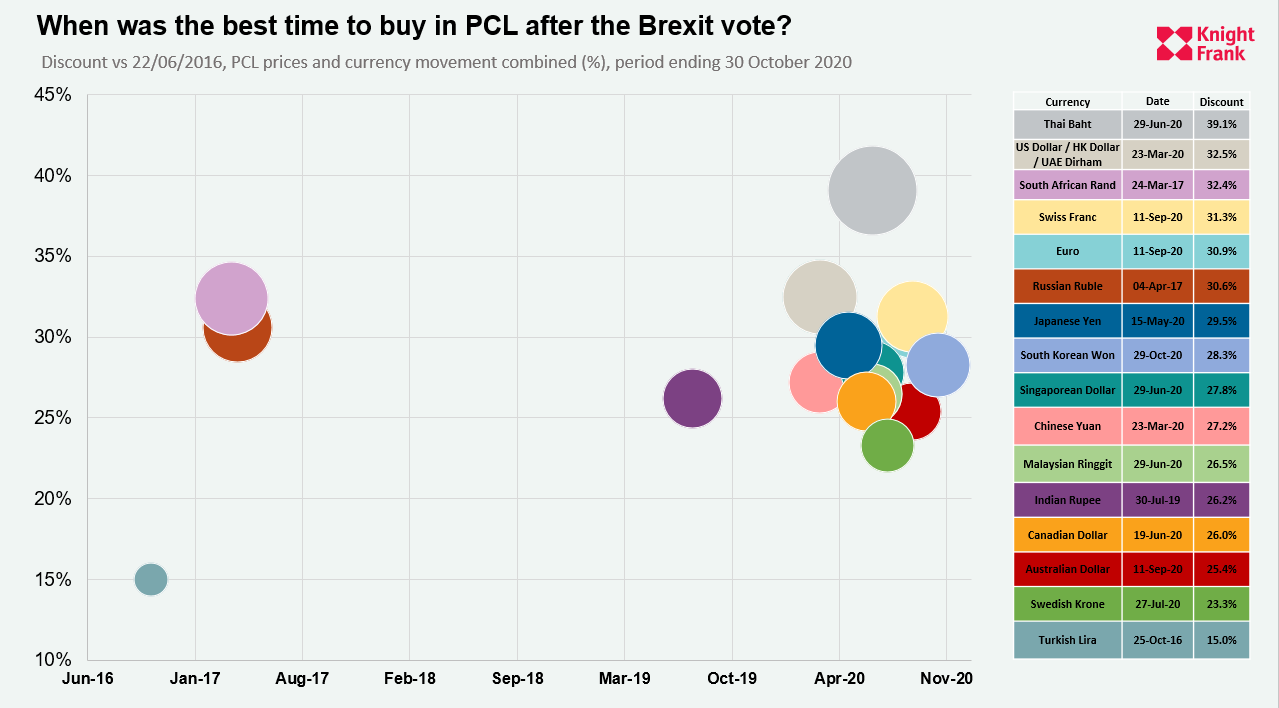UK Property Market Outlook: Week Beginning 23 November
Overseas buyers can expect a sudden change in the trajectory of the pound if a Brexit deal is reached
3 minutes to read
An unmistakable sense of déjà vu surrounds Brexit talks as we approach the end of the transition period on 31 December.
There are strong echoes of the final months 2019, without the drama of a razor-thin parliamentary majority in London but with the added urgency of a global pandemic.
It is precisely because the stakes are so high that more economists believe a deal will be struck, even if it merely avoids a no-deal cliff-edge. It is why Goldman Sachs has urged investors to buy the pound in recent weeks. “The Brexit process has been in a quieter, more technical phase, and that is good news for the prospects of an eventual deal,” the Wall Street bank said.
Savvas Savouri, chief economist of hedge fund Toscafund, went further. “We are swiftly moving to a point of reckoning when Brexit becomes a done deal and the pound can rise to its proper level of circa 1.30 against the euro and buys circa 1.70 US dollars.”
The pound was trading at $1.33 US dollars on Friday morning last week.
With a timetable that could move quickly in coming days and weeks, overseas investors may see their currency discount erode. Savouri says any currency movement could be sudden, pointing to the dramatic impact the referendum result had in June 2016.
We have analysed the size of currency discounts in the four-and-a-half years since the Brexit vote, underlining the scale of the opportunities that may begin to disappear.
The below chart shows the day on which investors denominated in a range of currencies would have achieved the maximum post-referendum discount in prime central London (PCL). The figures also take into account property price changes in PCL over the period.

Compared to the day before the EU referendum, a buyer denominated in Thai Baht would have benefitted from an effective discount of 39.1% if they had bought on 29 June this year. That was the largest such discount of all the currencies analysed.
Discounts in excess of 30% have also been available in a range of other overseas currencies, including the US dollar, Euro and Swiss Franc. The optimal timing for the transactions differ, with some currencies being stronger versus the pound several years ago, including the South African Rand and Russian Rouble.
For the majority of currencies, the pandemic produced the biggest currency movement over the period, with the pound dropping to $1.15 against the US dollar on 23 March of this year.
Meanwhile, the South Korean Won has provided the most recent buying opportunity. Indeed, the Won has strengthened since the end of October (when the current PCL data ends) on the back of hopes for a Covid-19 vaccine.
International buyers have many factors to think about as we have previously analysed, including travel restrictions and a 2% stamp duty surcharge in the UK from next April.
However, the potential for a Brexit deal is an increasingly important consideration.
Take a look at our overseas buyers stamp duty calculator on the link below.
https://www.knightfrank.co.uk/overseas-buyer-stamp-duty-calculator